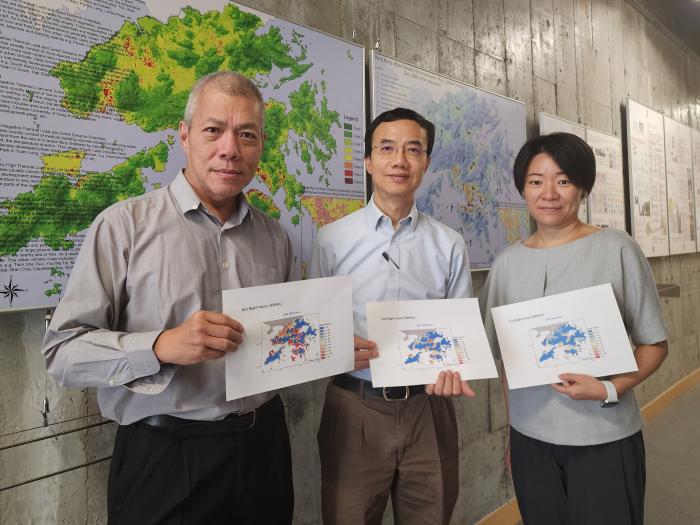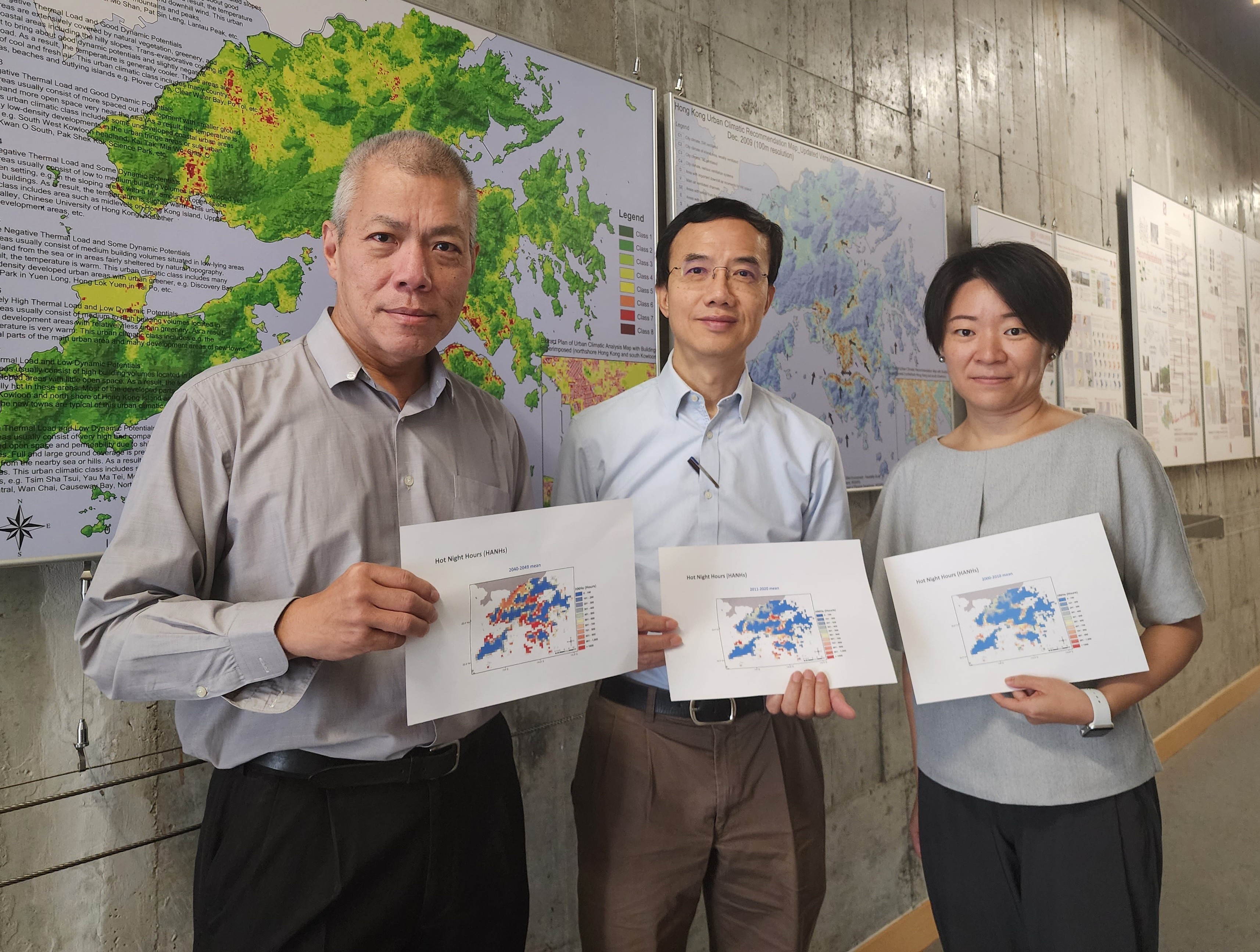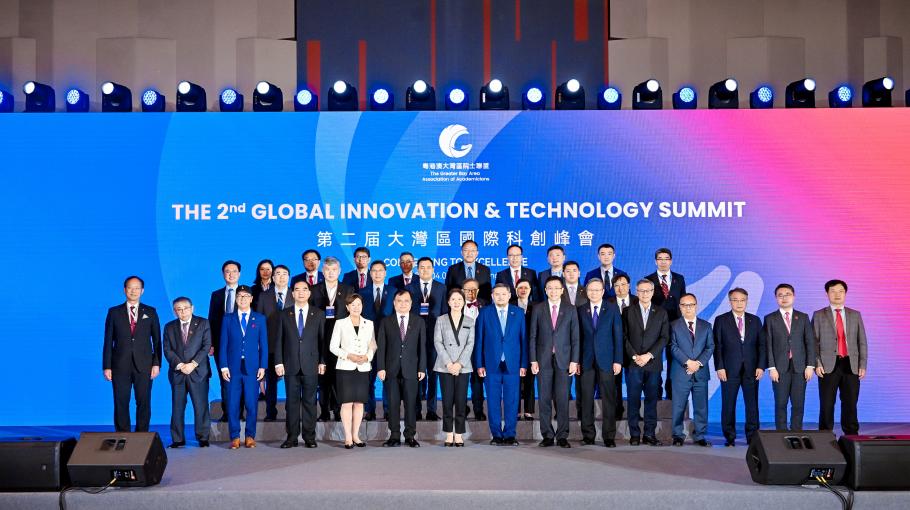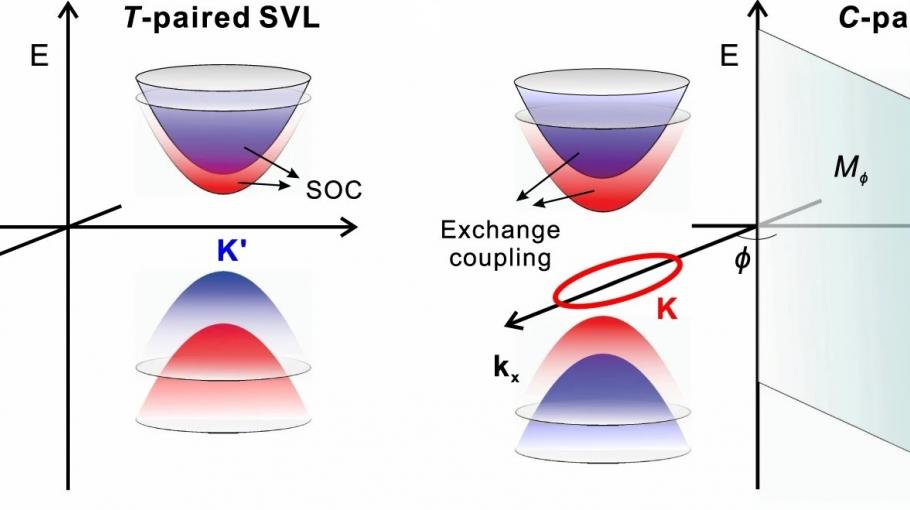In recent years, Hong Kong has experienced a series of extreme weather events. In July 2022, the scorching heat broke 11 records, while in 2023, the city experienced hourly rainfall of 158.1mm, the highest since records began in 1884. An inter-university research team by The Hong Kong University of Science and Technology (HKUST), The Chinese University of Hong Kong (CUHK), and the University of Hong Kong (HKU) conducted a study on extreme weather events and their impacts on the built environment in Hong Kong, aiming to assess the trends and effects of extreme weather events under the influence of global climate change.
Projected increase of 50% in hot nights and over 40% in extreme rainfall in 2040-2049
The cross-university research team combined a mesoscale Weather Research and Forecasting (WRF) Model with local urban environmental data to estimate the average number of hot nights in Hong Kong from the past decade to the 2040s. The results predict that the 10-year average number of hot nights, defined as the temperature not falling below 28 degrees, will increase by 50%, from 32 days to about 48 days. The 10-year average of the longest consecutive number of hot nights is also expected to increase from eight to approximately 10, with the maximum number of consecutive hot nights reaching as long as 15 days. A previous CUHK study proved that hot nights pose a greater threat to public health than hot days.
Considering Hong Kong’s high-density urban morphology and the urban heat island effect, the research team calculated the variations in heat stress by district based on the 10-year average of the longest consecutive number of hot nights. By the 2040s, Sha Tin, Tuen Mun, Kowloon, the northern part of Hong Kong Island, the southern part of Hong Kong Island and the airport region are projected to be heavily affected by hot nights (please refer to the attached maps).
According to climate model projections, Hong Kong is expected to experience its highest hourly rainfall of 230mm in the 2040s, over 40% higher than the record set during a recent black rainstorm (details provided in the attached table in the appendix). The research team believes that with more intense and frequent extreme rainfall, the chances of landslides and severe flooding will also significantly increase.
Enhancing public awareness and disaster preparedness; integrating climate change considerations into policymaking
Extreme heatwaves and heavy rainfall will become more frequent and severe, eventually evolving into a new norm. Prof. Jimmy FUNG Chi-Hung, Chair Prof. in the Department of Mathematics and the Division of Environment and Sustainability at HKUST, stated, “Compared to extreme heatwaves, although heavy rain generally has a shorter duration, it can be more destructive. Floods, waterlogging and landslides can pose immediate threats to the safety of citizens, as well as having a significant impact on urban infrastructure. Moreover, heavy rain usually comes suddenly, and there are still limitations on scientists’ ability to accurately predict it. This situation further tests the government’s and citizens’ disaster preparedness and emergency response capabilities.”
Prof. Edward NG Yan-Yung, the project leader and Yao Ling Sun Prof. of Architecture at CUHK, emphasizes the need to enhance public awareness of the severity and potential impacts of these events. Taking heavy rain as an example, in the past, some citizens may have believed that they could still go out or rush home if a Black Rainstorm Signal has been issued. However, in the face of the new normal of extreme weather, citizens will need to pay greater attention to their personal safety, staying indoors in a safe place and waiting for the heavy rain to subside, and staying away from flooded areas and slopes.
Dr. REN Chao, Assoc. Prof. in the Faculty of Architecture at HKU, said, “In prolonged extreme heat, the elderly and individuals with chronic illnesses are more susceptible to heatstroke and cardiovascular disease, leading to increased demand for ambulances and accident and emergency services. The government should consider the varying degrees of heatwave impact in different districts to effectively allocate medical resources and enhance community services.”
The research team supports the measures proposed in 2023 Policy Address regarding extreme weather, and believes that the findings of this research project can provide scientific data for the government. The team emphasizes that besides extreme rainfall, the normalization of hot weather has significant impacts on livelihoods and public health. They urge the government to take a more proactive approach in addressing various extreme weather crises. This includes formulating protocols to cope with extreme weather, implementing permanent support measures for the new normal, and adjusting the plans for management of new infrastructure. Effective coordination among different government departments is essential during the process of issuing forecasts and implementing response measures, involving bodies such as the Social Welfare Department, Home Affairs Department, Health Bureau and Drainage Services Department. The community at large should also prepare themselves for extreme weather conditions by enhancing disaster preparedness training and ensuring the availability of emergency evacuation supplies. Reducing carbon emissions is more urgent than ever, and the team calls on businesses and citizens to do so, as part of a collective effort to address the challenges of climate change. (Detailed recommendations can be found in the appendix.)
About The Hong Kong University of Science and Technology
The Hong Kong University of Science and Technology (HKUST) (https://hkust.edu.hk/) is a world-class research intensive university that focuses on science, technology and business as well as humanities and social science. HKUST offers an international campus, and a holistic and interdisciplinary pedagogy to nurture well-rounded graduates with global vision, a strong entrepreneurial spirit and innovative thinking. Over 80% of our research work were rated “Internationally excellent” or “world leading” in the Research Assessment Exercise 2020 of Hong Kong’s University Grants Committee. We were ranked 2nd in Times Higher Education’s Young University Rankings 2023, and our graduates were ranked 29th worldwide and among the best from universities from Asia in Global Employability University Ranking 2023. As of September 2023, HKUST members have founded 1,747 active start-ups, including 9 Unicorns and 13 exits (IPO or M&A), generating economic impact worth over HK$ 400 billion. InvestHK cited QS World University Rankings by Subject 2021 to demonstrate the performance of five world’s top 100 local universities in several innovation-centric areas, among which HKUST ranked top in four engineering and materials science subjects.
For media enquiries, please contact:
Philip Kwong
Tel: 2358 6299
Email: philipkwong@ust.hk





